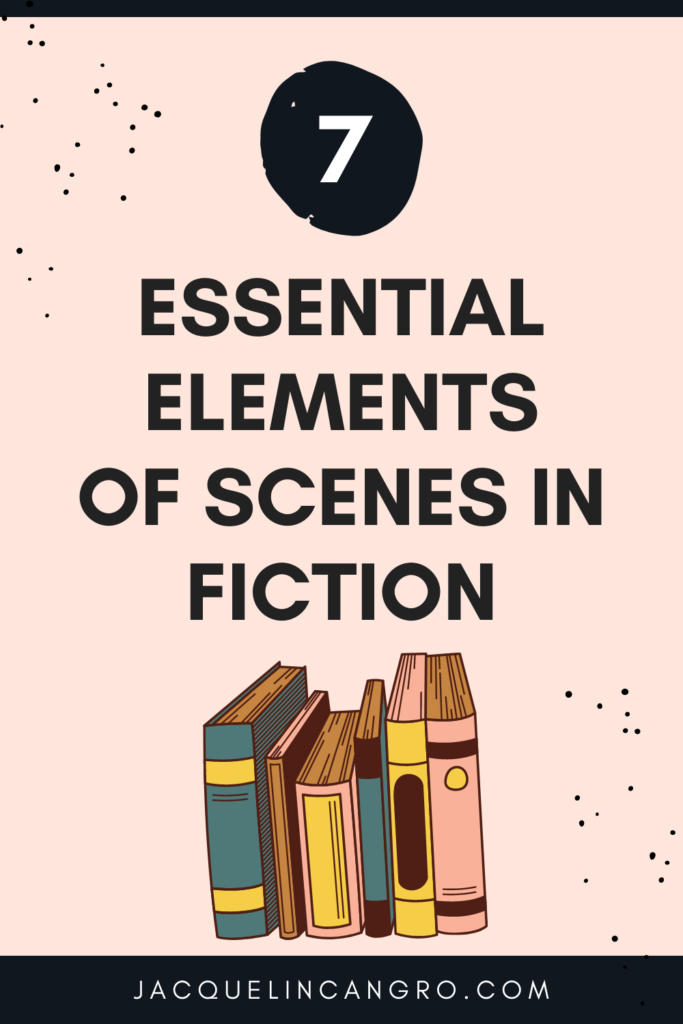Scenes are the building blocks of fiction. Every scene contributes to the story in some way whether through characterization or plot progression. I like to think of a scene as a miniature narrative arc within my novel. If you have the wrong scenes or if your scenes are in the wrong order, your story can stall. Let’s make sure that doesn’t happen by making sure your scenes have these seven essential elements. But first…
What is a scene?
Scenes show the reader something important about the story. It highlights your protagonist’s growth as a character and puts them through their paces as they attempt to reach their goal. A scene has a beginning, middle, and end that develops the interaction between characters and moves the plot forward.
As a writing coach and editor, I find that many writers don’t give enough consideration to scene development so the scenes lack tension and escalation. The plot and the characters stagnate.

7 Essential Elements of a scene
- Protagonist: This is the main character who has goals and undergoes change throughout the story. A strong scene shifts a protagonist closer to or further away from their goal.
- Antagonist(s) and/or allies: These are characters who thwart and/or support your protagonist.
- Dialogue: Often scenes contain a conversation between characters that escalates the story.
- Momentum: Beat-by-beat action that allows the story to feel as if it is unfolding in real time.
- Tension: Conflict that tests your characters and escalates the stakes. This doesn’t have to be a car chase or jack Reacher-style takedown.
- New plot information: Events that advance the story and deepen the reader’s understanding of the characters and lead the reader to the next scene.
- Setting and time period: A scene exists in a location at a specific point in time, allowing the reader to enter the characters’ world. Ground the readers in the “where” and “when” of the moment.
What is the purpose of this scene?
As you review each scene in your novel, this is one of the most important questions to ask yourself: what is the purpose of this scene? Start writing each scene with an intention of what you’d like the reader to learn about your characters and their situation. Then focus on shifting your protagonist’s emotional state from the beginning to the end of the scene.
Pair this post with my previous post about Four Reasons Your Novel Needs Backstory for a solid compliment on scene and summary.
___________________________
NEW ONLINE CLASS ALERT! If you’ve been wondering how to create compelling scenes in your novel, my new GrubStreet class Essentials for Scene in the Novel is for you! we will go over the different types of scenes and explore tools and techniques to make sure that the scene is adding rather than detracting from the story. This asynchronous class begins on July 28. Hope to see you there!


